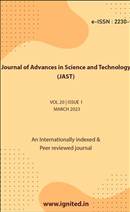Analysis the Integrated Approach of Construction Management in India’s Smallest Diameter Sewer Tunnel
DOI:
https://doi.org/10.29070/qdk1fp39Keywords:
India, construction management, smallest diameter sewer tunnel, sustainability, infrastructure development, government plans, environmentally responsible building practices, modern construction management, Construction Management TechniquesAbstract
India has a large population and is the world's second most populous nation, behind China. As aresult, the nation has a strong need for infrastructure. Infrastructure has been developed, but unfortunatelythere is a lack of policy and foresight. Any government's long-term goal for the economy and its citizensmust be reflected in its infrastructure development policies. In particular, sustainability was not a prioritythroughout the building of necessary infrastructure. This initiative looks at how India may build itsinfrastructure more sustainably. The drivers and constraints of sustainable infrastructure developmentare also discussed in this chapter. There has been a little shift in recent years toward environmentallyresponsible building practices in India. The government's latest plans strongly suggest a dramaticchange in direction toward sustainability. The government is placing a greater emphasis on sustainableinfrastructure activity. Modern construction management is the art of planning, organizing, andcontrolling all aspects of a construction project to ensure that it is completed on time, within budget, andto everyone's satisfaction. Based on the results of this research, the Indian construction sector now hasto use Construction Management Techniques in order to build India's smallest diameter sewer tunnel.Downloads
References
Adedeji A.O (1989): Depreciation of production planning strategies in the operation of Nigerian construction firms. Journal of the Construction Contractors Association of Nigeria. 13 (1), 3-24
Idoro, G.I & Patunola - Ajayi J.B. (2009) ‘Exploring Marketing Strategies for Project Management in the Nigerian Construction Industry’. Nordic Journal of Surveying and Real Estate Research, 6 (2). Pages 25-36
Opara N. (1986): Managing Building Management and Planning. Construction Economics, 12-15
Patel, B.M (2008) ‘Project Management: Strategic financial planning, evaluation and control’. New Delhi, Vikas Publishing House PVT Ltd.
Abbasi, Y.G & Al Mharmah (2000) ‘Project Management The implementation of the public sector in a developing country’ International Journal of Project Management,18 (3), pp 105-109
Pinto, J.K (2007) Project Management: Profiting Competitive Profit, Upper Sddle River, NJ; Pearson Education.
Stukenbrucj L.C and Zomorrodian, A (1987) ‘Project Management: Promise for Developing Countries’ Project Management, 5 (3), pp. 167-175
White, D & Fortune, J (2002) ‘Current practice in project management - a critical study’ International Journal of Project Management, 20 (6). Pp. 1-11.
Westland A. (2003) ‘Project Management Life cycle’, London, Kogan Rage Limited.
Nwachukwu C.C, Echeme, I.I and Okoli, M.N (2010) “Project Management Factor Indexes; Obstacle to Success in Project Implementation in the Developing Economy Sector ”European Journal of Scientific Research’ July July ISSN 1450 - 216X Vol. 43. No. 3, pp 392 - 405 United Kingdom.
Muller, R & Turner, R. (2007) ‘Matching project manager leadership style with project type’. International Project Management Journal, 25 (4), pp. 21-32, DOI: 10.1016 /j.ijproman.2006.04.003, Direct Science Website, [Online] .Available from: http://www.sciencedirect.com.ezproxy .liv.ac.uk
Howell G. A. (1999). "What is Lean Construction". Lean Construction Institute. 1–10 [13] S. Shanmugapriya (2013) An investigation of an important factor influencing time and cost overruns in Indian Construction Projects (ISSN 2250-2459, ISO 9001: 2008):






